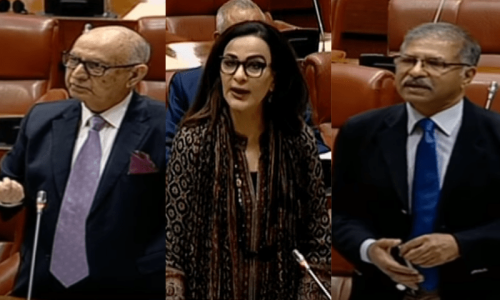 |
The energy was electric, dhamaal (an ecstatic Sufi dance to the beat of drums) was at its peak, the qawwali (songs sung at Sufi Shrines) was being rendered by none other than Ghulam Fareed Sabri, 'Bhar day Jholee may reeya Mohammed', and the langar, (open kitchen where food is served to all visitors) at the blue tiled Sufi Shrine of Lal Shahbaz Qalandar was Sindhi Biryani.
The year was 1981and there I was a 10-year-old, utterly mesmerised as the tempo and volume of the beating drums pounded in sync with my heart. I soaked in the atmosphere, the music, the frenzy of the mureeds (devotees of a Sufi or Murshid) and of course the fiery Sindhi Biryani; delicious and exotic, a perfect manifestation of its surroundings.
A mughlai twist to the pulao, the biryani is a celebratory dish in more ways than one.
Where the variety of pulao dishes are known for their aroma, the different kinds of biryani platters are known for their unique fiery flavour. Having lived in Karachi all my life, I know the taste of a deliciously spicy Sindhi Biryani. The masala-seeped potatoes, the tangy alloo bukhara (dried plums/prunes), mint and khatta dahi (sour yogurt) render the Sindhi Biryani a different taste, it’s spicier than most regional biryanis and the proportion of the masala to the rice is a little more than of most biryanis on the sub-continental menu.
 |
The cooks from the region of Sindh are known for their zesty food, their reputation for making hot dishes goes back to the 10th century, hence it is not surprising that the biryani hailing from the province of Sindh is considered the most picante out there.
Also read: Food for thought: Bring on the Biryani
It is said that "between the eighth and 10th century the Abbasid Caliphs of Baghbad were at the height of their power and spent lavish amounts of money on their kitchens. The expenditure on food was matched by their gluttony, and cooks from all over the Muslim world, namely Turkey, Arabia, Egypt, gathered at Baghdad and incorporated their own local dishes into the courtly culinary repertoire.
"Even Indian cooks arrived from Sindh (the southern part of what is now Pakistan), which had been conquered by the Arabs in the year 713. The cooks hailing from Sindh were known for their trustworthiness, ingenuity, and extremely spicy dishes," as quoted in the chapter titled Biryani in the book, Curry: A tale of Cooks and Conquerors by Lizzie Collingham.
Catch up with more Food Stories.
While in most biryanis, the yogurt used is sweet, the Sindhi Biryani requires the yogurt to be khatta (sour), with the red and green chillie, and whole garam masala used vigourously.
The cooking method too, is somewhat different from other regional biryanis and there is no use of rose or kewra water, as is common in most mughlai dishes.
The recipe I share with you today is from the pantry of Fehmeeda Auntie, who hailed from interior Sindh.
Here it is from my kitchen to yours.
Ingredients
3lbs mutton (leg meat)
3 mugs basmati rice
5 medium potatoes, cut in half
8 oz. to 12 oz. oil
2 large onions, sliced
4 teaspoons freshly chopped garlic and garlic
5 to 6 medium sized tomato
12 to 14 prunes
Salt to taste
3 to 4 tsp red chillie powder
12 to 14 cloves
10 green cardamoms
12 to 14 peppercorns
2 teaspoons cumin seeds
2 cinnamon sticks
5 black cardamom pods
4 to 6 bay leaves
6 oz. to 8 oz. sour yogurt (khatta dahi)
6 to 8 green chilies
½ bunch coriander leaves
10 to 12 mint leaves
Orange food colour (a pinch)
8 oz. to 16 oz. water
 |
Ingredients to be added to boiling rice
Salt to taste
4 bay leaves
4 cinnamon sticks
3 black cardamom pods
¼ tsp black peppercorns
¼ tsp cloves
Method
Heat oil and fry sliced onions until golden brown, set aside two to three tbsp. of onions (to be used later as garnish).
To the onions add ginger garlic, tomatoes, prunes, salt, red chillie, bay leaves, cumin and whole garam masala. Fry for five to 10 minutes on high heat, stirring constantly, adding yogurt, meat and water as required.
Once the meat is ¾ done, add pealed potatoes. Cook 15 to 20 minutes or until meat and potatoes are tender, adding the greens and stirring on high heat. The biryani masala is ready, set aside.
In a separate (colander) pot, boil water, adding whole garam masala and bay leaves. Once the water comes to a boil, add pre-soaked rice keeping it to a tender crisp, since the rice will cook completely in the dum phase.
Drain the rice; layer the pot with rice, topping with a layer of biryani masala, adding a second layer of rice.
 |
Top with fried onions, sprinkle food colouring, sliced tomatoes, cilantro, mint and green chillie. Seal pot with foil and lid.
Notch up the heat to full for 5 minutes and medium to low heat for 15 minutes to complete the dum.
Let sit for 10 minute, mix and serve.
-Photos by Fawad Ahmed












































